What is EPedia
EPedia is supposed to be a program that will provide easy access to Wikipedia from a desktop computer, but it is adware. Adware is considered a potentially security threat because it often installed on personal computer without the knowledge of the owner. Adware sometimes called ‘ad-supported’ software is a form of software that shows a huge number of advertisements in form of pop-up windows, discount offers, promos or even fake alerts on the personal computer. Adware can seriously affect your privacy, your computer’s performance and security.
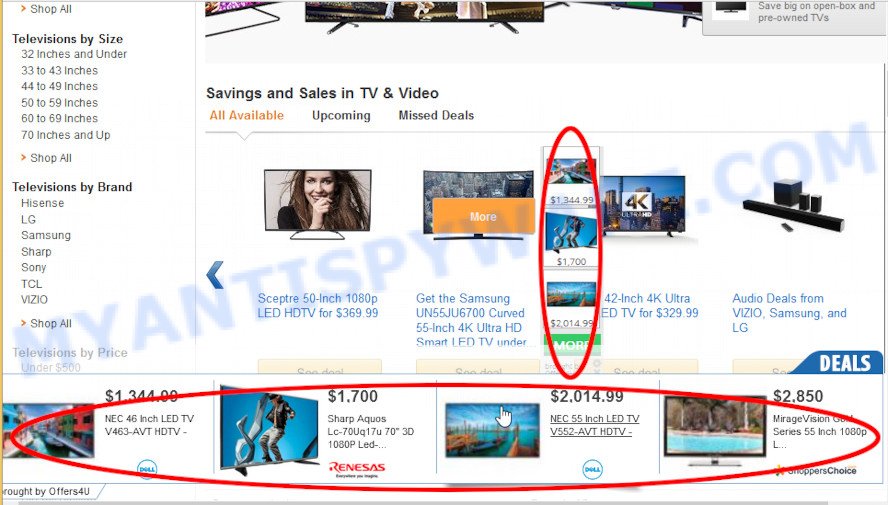
Unwanted ads
The worst is, adware can install a component that enables its creator to track which webpages you visit, which products you look at upon those pages. They are then able to select the type of advertisements they display you. So, if you had adware on your personal computer, there is a good chance you have another that is collecting and sharing your confidential data with third parties, without your knowledge.
By following guidance below it’s easy to scan and delete adware software from Google Chrome, IE, Mozilla Firefox and MS Edge and your computer. Learn how to remove Ads by EPedia and adware software, as well as how to run a full computer virus scan.
How does EPedia get on your computer
These days certain freeware creators bundle PUPs or adware with a view to making some money. These are not free software as install an unwanted applications on to your Microsoft Windows computer. So whenever you install a new free programs that downloaded from the Web, be very careful during installation. Carefully read the EULA (a text with I ACCEPT/I DECLINE button), choose custom or manual install method, uncheck all third-party programs.
Threat Summary
| Name | EPedia |
| Type | adware, potentially unwanted application (PUA), pop-ups, pop-up virus, popup ads |
| Symptoms |
|
| Removal | EPedia removal guide |
How to remove EPedia adware (removal tutorial)
If you have constant popups or unwanted advertisements, slow personal computer, freezing computer problems, you are in need of adware removal assistance. The steps below will guide you forward to get EPedia adware removed and will allow you get your device operating at peak capacity again.
To remove EPedia, complete the following steps:
How to delete EPedia without any software
First of all, try to delete adware software manually; to do this, follow the steps below. Of course, manual removal of adware requires more time and may not be suitable for those who are poorly versed in computer settings. In this case, we recommend that you scroll down to the section that describes how to remove EPedia adware using free utilities.
Uninstall PUPs through the Windows Control Panel
First, you should try to identify and remove the program that causes the appearance of annoying advertisements or browser redirect, using the ‘Uninstall a program’ which is located in the ‘Control panel’.
Windows 8, 8.1, 10
First, press the Windows button
Windows XP, Vista, 7
First, press “Start” and select “Control Panel”.
It will show the Windows Control Panel as displayed in the figure below.
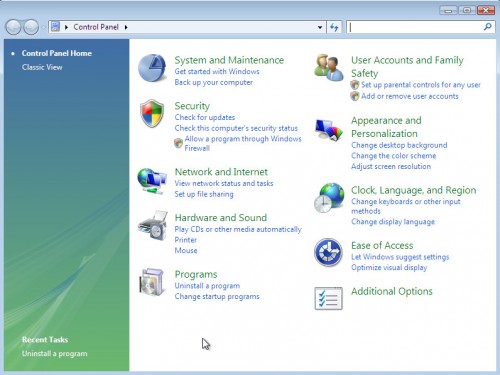
Next, click “Uninstall a program” ![]()
It will open a list of all apps installed on your PC system. Scroll through the all list, and uninstall any questionable and unknown software. To quickly find the latest installed applications, we recommend sort software by date in the Control panel.
Remove EPedia adware from Google Chrome
Reset Chrome settings will remove EPedia ads from internet browser and disable harmful extensions. It will also clear cached and temporary data (cookies, site data and content). However, your saved passwords and bookmarks will not be changed or cleared.
Open the Chrome menu by clicking on the button in the form of three horizontal dotes (![]() ). It will show the drop-down menu. Choose More Tools, then click Extensions.
). It will show the drop-down menu. Choose More Tools, then click Extensions.
Carefully browse through the list of installed extensions. If the list has the extension labeled with “Installed by enterprise policy” or “Installed by your administrator”, then complete the following steps: Remove Google Chrome extensions installed by enterprise policy otherwise, just go to the step below.
Open the Google Chrome main menu again, click to “Settings” option.
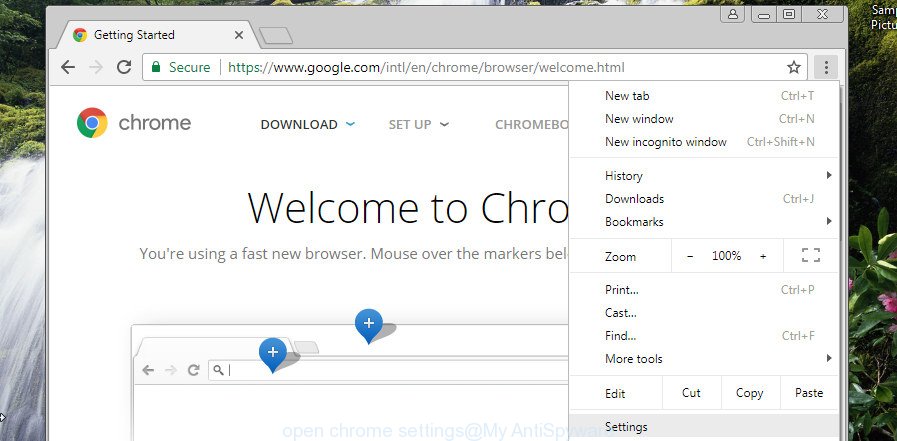
Scroll down to the bottom of the page and click on the “Advanced” link. Now scroll down until the Reset settings section is visible, as shown in the following example and click the “Reset settings to their original defaults” button.
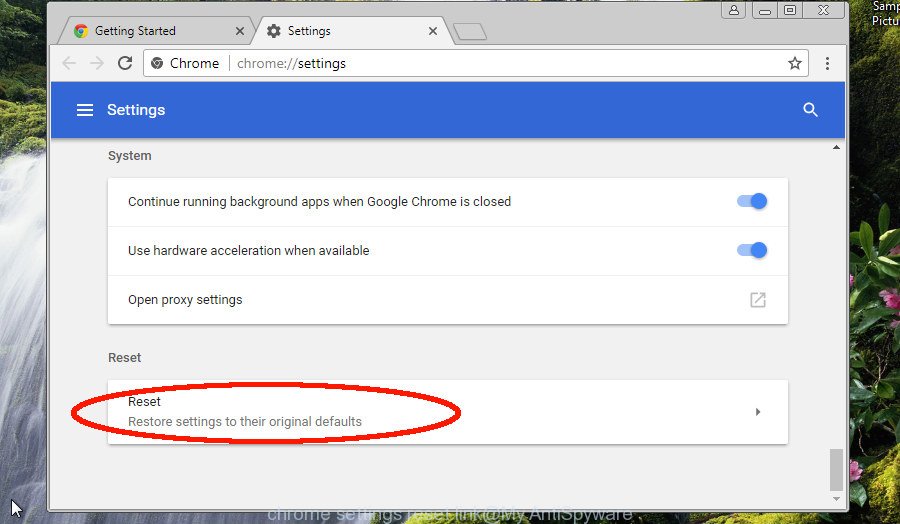
Confirm your action, click the “Reset” button.
Delete EPedia from Mozilla Firefox by resetting internet browser settings
If the Mozilla Firefox browser program is hijacked, then resetting its settings can help. The Reset feature is available on all modern version of Firefox. A reset can fix many issues by restoring Firefox settings such as default search provider, new tab page and startpage to their default state. However, your saved bookmarks and passwords will not be lost. This will not affect your history, passwords, bookmarks, and other saved data.
Click the Menu button (looks like three horizontal lines), and click the blue Help icon located at the bottom of the drop down menu as displayed on the image below.
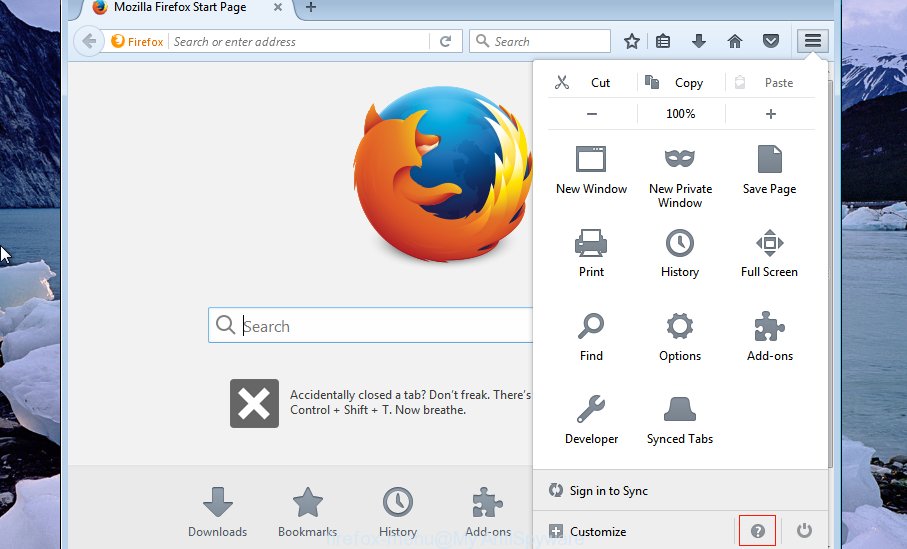
A small menu will appear, click the “Troubleshooting Information”. On this page, press “Refresh Firefox” button like below.

Follow the onscreen procedure to restore your Firefox web-browser settings to their default values.
Remove EPedia adware from IE
If you find that Microsoft Internet Explorer web-browser settings like newtab, search provider by default and start page had been replaced by EPedia adware, then you can restore your settings, via the reset browser procedure.
First, launch the IE. Next, click the button in the form of gear (![]() ). It will open the Tools drop-down menu, click the “Internet Options” as shown in the following example.
). It will open the Tools drop-down menu, click the “Internet Options” as shown in the following example.

In the “Internet Options” window click on the Advanced tab, then click the Reset button. The IE will display the “Reset Internet Explorer settings” window as on the image below. Select the “Delete personal settings” check box, then click “Reset” button.

You will now need to reboot your computer for the changes to take effect.
Automatic Removal of EPedia
Manual removal is not always as effective as you might think. Often, even the most experienced users can not completely get rid of EPedia adware. So, we recommend to scan your computer for any remaining malicious components with free adware software removal applications below.
How to remove EPedia adware software with Zemana Free
Zemana AntiMalware (ZAM) highly recommended, because it can detect security threats such adware software and malware which most ‘classic’ antivirus programs fail to pick up on. Moreover, if you have any EPedia removal problems which cannot be fixed by this tool automatically, then Zemana Free provides 24X7 online assistance from the highly experienced support staff.
Now you can install and run Zemana Free to delete EPedia ads from your internet browser by following the steps below:
Visit the following page to download Zemana installer called Zemana.AntiMalware.Setup on your PC. Save it on your Windows desktop or in any other place.
165075 downloads
Author: Zemana Ltd
Category: Security tools
Update: July 16, 2019
Run the setup file after it has been downloaded successfully and then follow the prompts to install this tool on your computer.
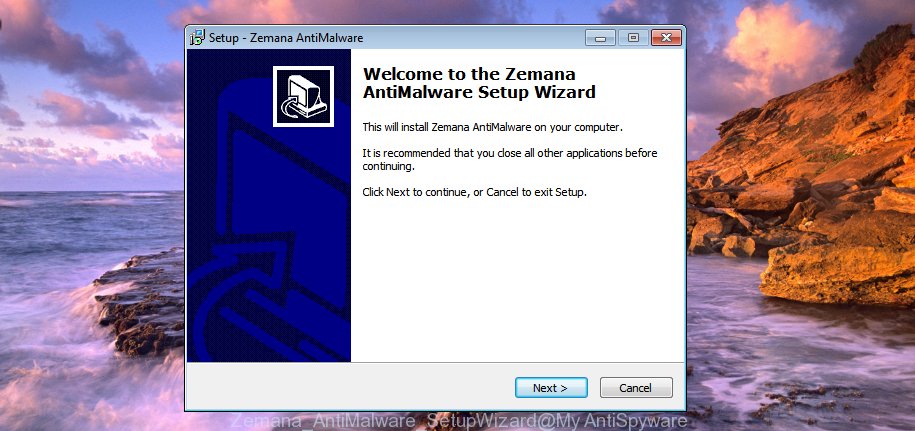
During installation you can change certain settings, but we suggest you do not make any changes to default settings.
When installation is finished, this malicious software removal tool will automatically launch and update itself. You will see its main window like the one below.
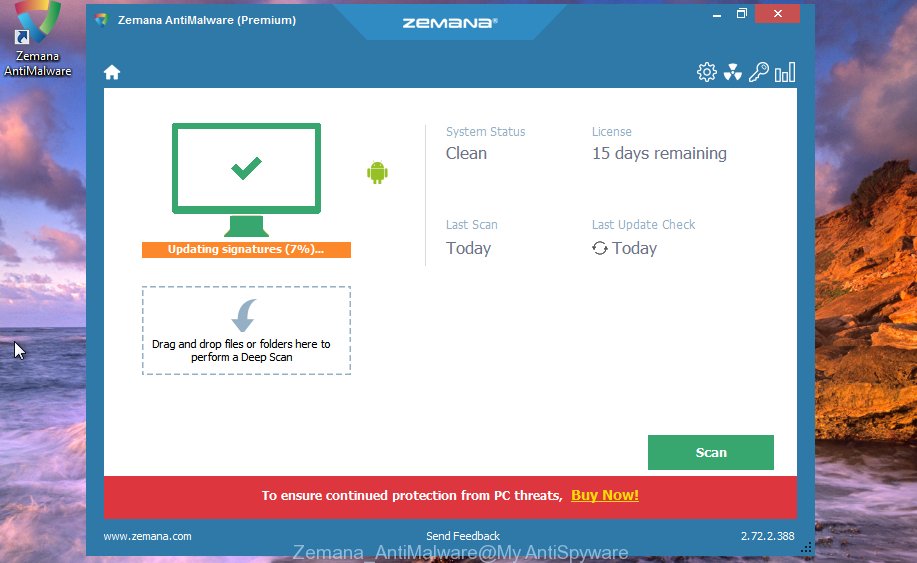
Now press the “Scan” button to perform a system scan for the EPedia adware. A system scan may take anywhere from 5 to 30 minutes, depending on your computer. When a malware, adware software or potentially unwanted software are found, the number of the security threats will change accordingly.

When Zemana Anti Malware (ZAM) has finished scanning your computer, Zemana Free will open a list of found threats. Review the scan results and then press “Next” button.
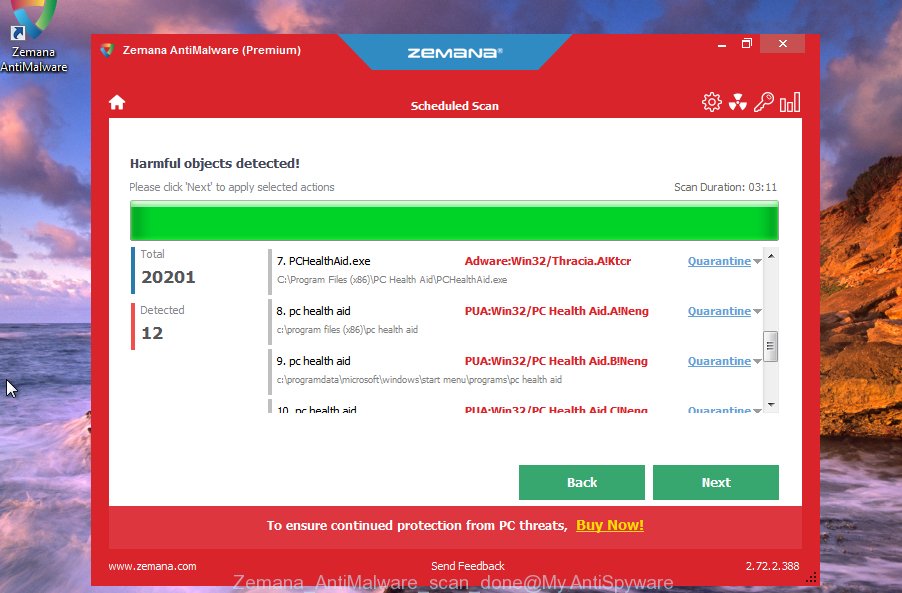
The Zemana Free will start to get rid of EPedia adware. When that process is finished, you can be prompted to restart your personal computer to make the change take effect.
Use HitmanPro to remove EPedia adware software
HitmanPro is one of the most effective utilities for uninstalling adware software, potentially unwanted software and other malicious software. It can look for hidden adware in your device and remove all malicious folders and files linked to adware software. HitmanPro will allow you to delete EPedia adware software from your device and Edge, Chrome, Firefox and Microsoft Internet Explorer. We strongly suggest you to download this utility as the authors are working hard to make it better.
Click the link below to download Hitman Pro. Save it on your Windows desktop or in any other place.
After the download is complete, open the folder in which you saved it and double-click the Hitman Pro icon. It will start the Hitman Pro utility. If the User Account Control prompt will ask you want to open the application, click Yes button to continue.

Next, click “Next” to start scanning your computer for the EPedia adware. A scan can take anywhere from 10 to 30 minutes, depending on the count of files on your PC and the speed of your personal computer. While the Hitman Pro is scanning, you can see how many objects it has identified either as being malicious software.
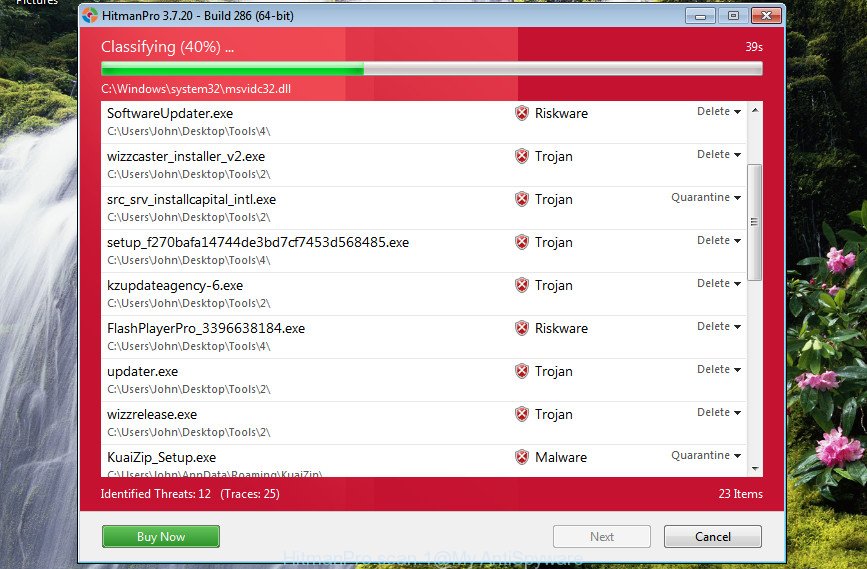
After that process is complete, the results are displayed in the scan report like below.
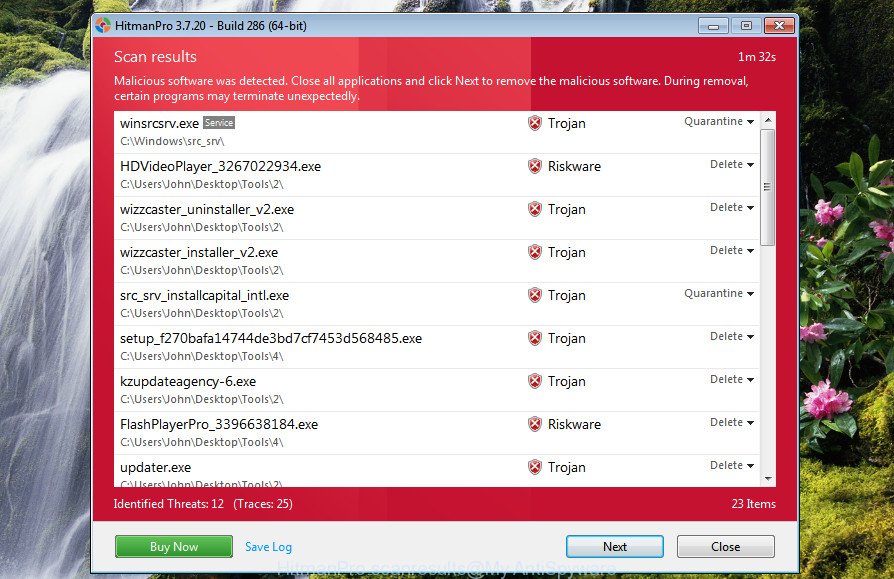
Review the scan results and then click “Next” button. It will show a dialog box, press the “Activate free license” button. The HitmanPro will delete EPedia adware software and move the selected items to the program’s quarantine. When finished, the utility may ask you to reboot your computer.
Remove EPedia adware with MalwareBytes Anti-Malware
If you’re still having problems with the EPedia adware — or just wish to check your personal computer occasionally for adware and other malicious software — download MalwareBytes. It’s free for home use, and detects and deletes various undesired applications that attacks your computer or degrades PC performance. MalwareBytes AntiMalware can remove adware, potentially unwanted programs as well as malware, including ransomware and trojans.
Installing the MalwareBytes Anti-Malware (MBAM) is simple. First you’ll need to download MalwareBytes AntiMalware (MBAM) on your MS Windows Desktop by clicking on the link below.
327297 downloads
Author: Malwarebytes
Category: Security tools
Update: April 15, 2020
After the downloading process is complete, close all windows on your PC system. Further, launch the file called MBSetup. If the “User Account Control” prompt pops up as displayed on the screen below, click the “Yes” button.
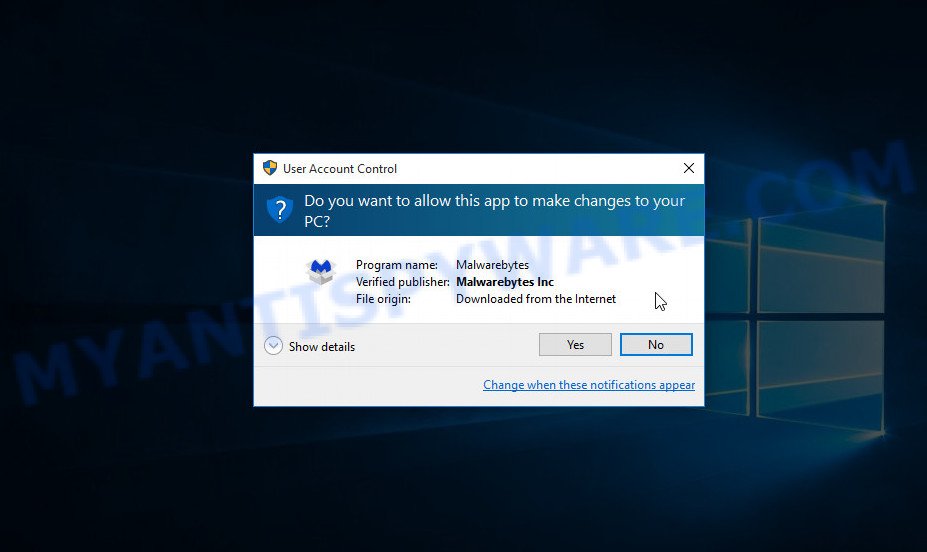
It will display the Setup wizard which will assist you set up MalwareBytes Anti Malware on the personal computer. Follow the prompts and don’t make any changes to default settings.
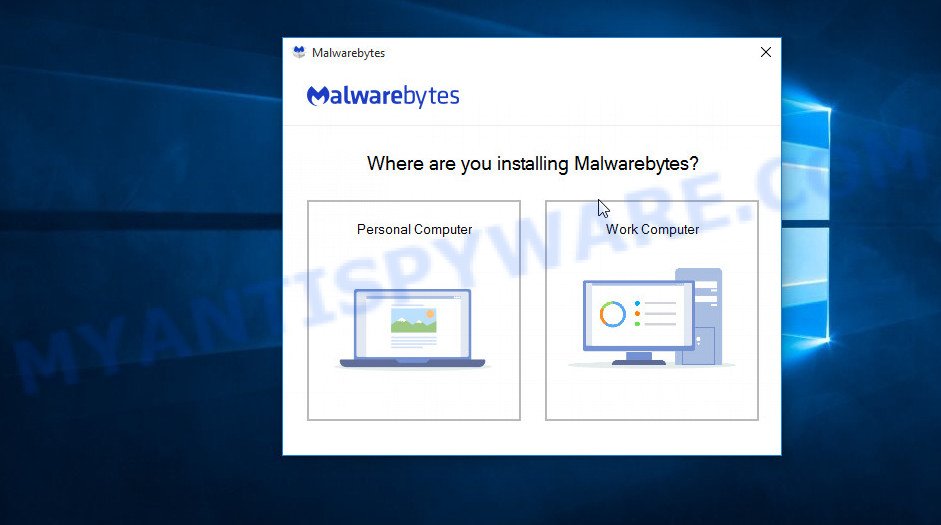
Once install is finished successfully, click “Get Started” button. Then MalwareBytes Free will automatically start and you can see its main window like below.
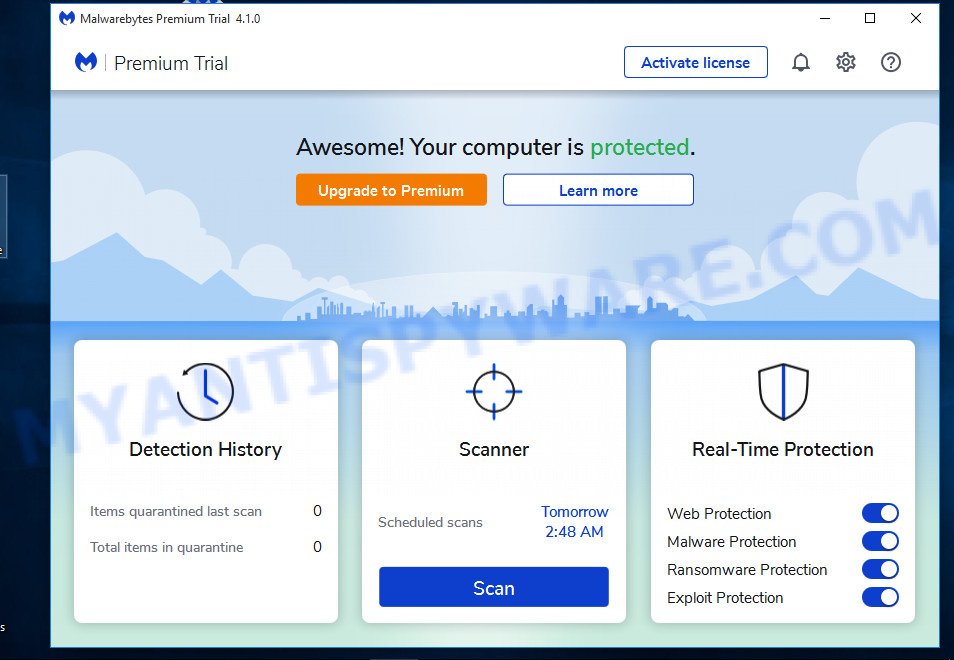
Next, press the “Scan” button to start scanning your computer for the EPedia adware. Depending on your device, the scan may take anywhere from a few minutes to close to an hour. While the MalwareBytes Free is scanning, you can see how many objects it has identified either as being malicious software.
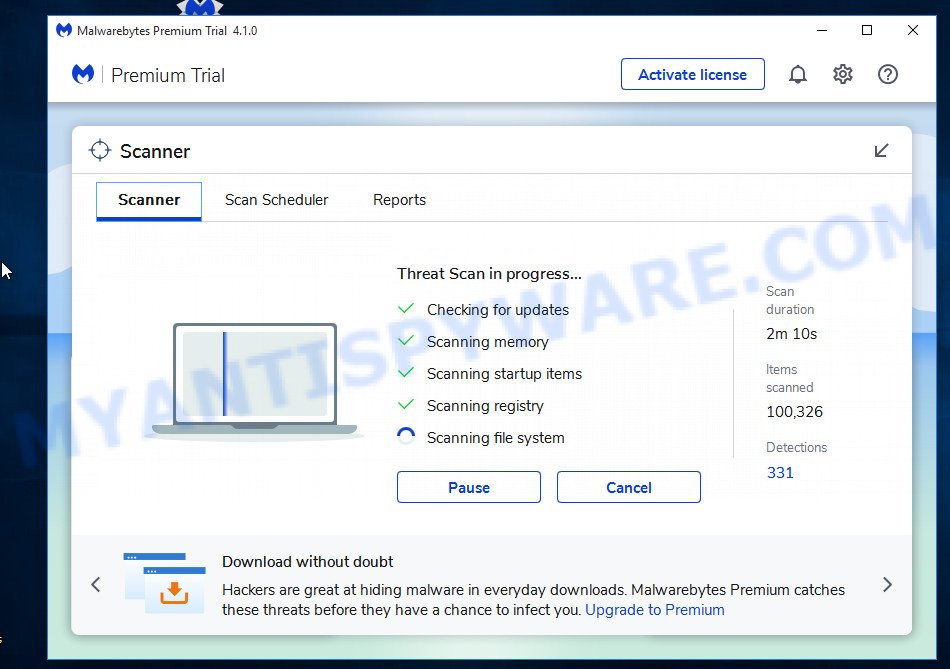
After the system scan is done, MalwareBytes will display a scan report. Make sure all threats have ‘checkmark’ and click “Quarantine” button.
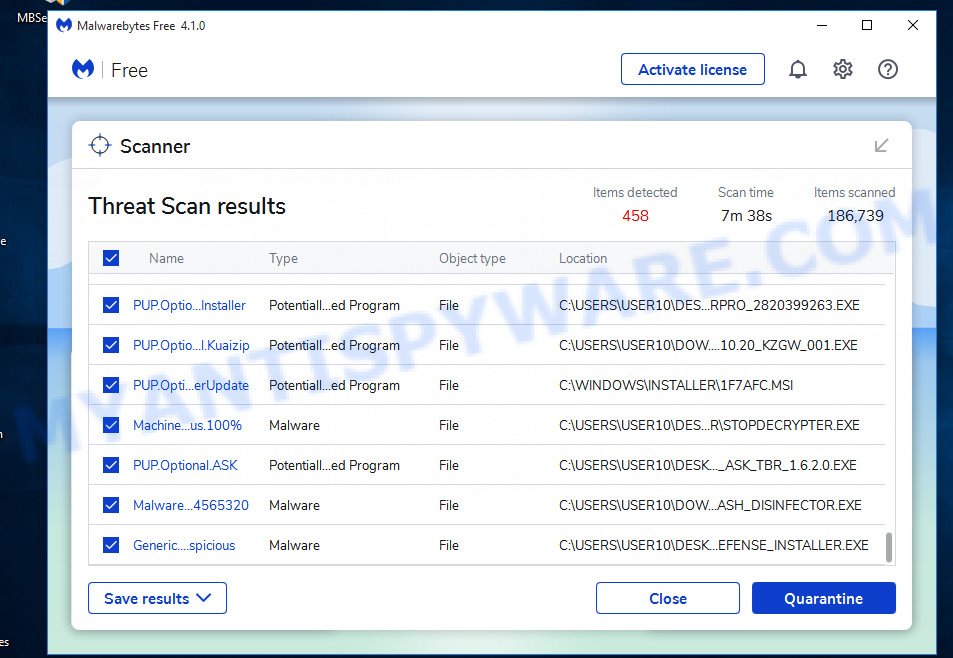
The MalwareBytes Free will remove EPedia adware. Once that process is finished, you can be prompted to restart your PC. We advise you look at the following video, which completely explains the procedure of using the MalwareBytes Anti Malware (MBAM) to get rid of hijackers, adware and other malicious software.
How to stay safe online
One of the worst things is the fact that you cannot stop all harmful websites using only built-in MS Windows capabilities. However, there is a application out that you can use to stop unwanted browser redirects, ads and pop ups in any modern web-browsers including Chrome, IE, Mozilla Firefox and MS Edge. It is called Adguard and it works very well.
- Please go to the following link to download AdGuard. Save it to your Desktop so that you can access the file easily.
Adguard download
26905 downloads
Version: 6.4
Author: © Adguard
Category: Security tools
Update: November 15, 2018
- After downloading it, run the downloaded file. You will see the “Setup Wizard” program window. Follow the prompts.
- Once the setup is finished, click “Skip” to close the install program and use the default settings, or press “Get Started” to see an quick tutorial that will help you get to know AdGuard better.
- In most cases, the default settings are enough and you don’t need to change anything. Each time, when you start your computer, AdGuard will run automatically and stop unwanted ads, block harmful and misleading websites. For an overview of all the features of the application, or to change its settings you can simply double-click on the icon named AdGuard, which can be found on your desktop.
Finish words
Now your computer should be clean of the EPedia adware. We suggest that you keep AdGuard (to help you stop unwanted advertisements and annoying malicious web-pages) and Zemana (to periodically scan your computer for new adwares and other malicious software). Probably you are running an older version of Java or Adobe Flash Player. This can be a security risk, so download and install the latest version right now.
If you are still having problems while trying to remove EPedia ads from the Google Chrome, MS Edge, Firefox and Internet Explorer, then ask for help here here.



















